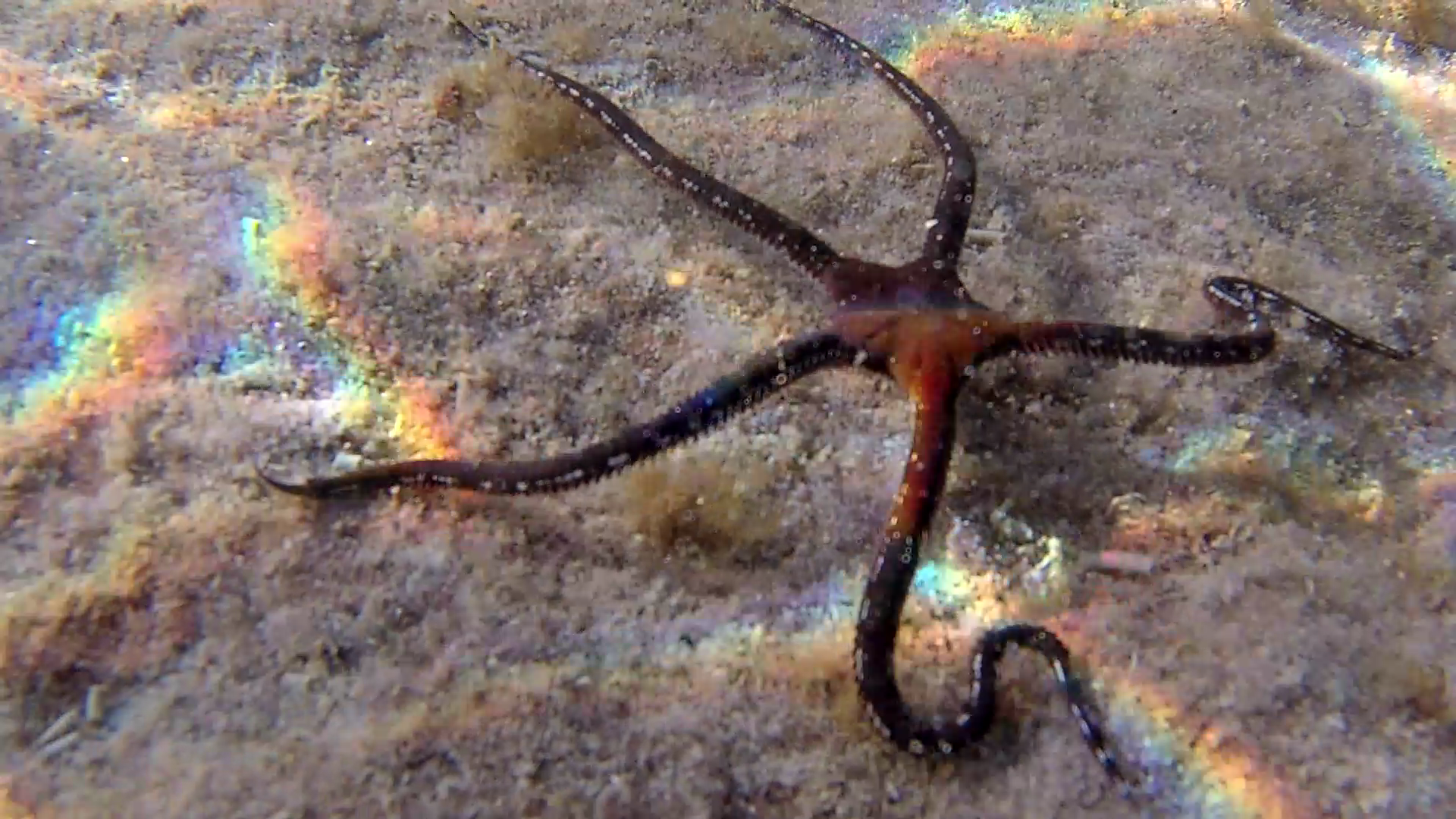Brittle Starfish - Ophioderma longicauda
Ophioderma longicauda, known as Brittle Starfish or smooth serpentine starfish, is a species of Echinodermata of the Ophiodermatidae family. Stella Serpentina Liscia Ofiura Ophioderma Longicauda intotheblue.it
Habitat and distribution
Common in the Mediterranean Sea and in the eastern Atlantic Ocean, from Great Britain to Angola and the Azores, on mobile, rocky bottoms or in the Posidonia oceanica meadows from a few meters to over 100 in depth.
Description
Very variable color, from red to dark brown, almost black, sometimes orange for deep specimens.
Behavior
It is a sciafila species, which prefers to take refuge in cracks or crevices in the rocks, even very quickly if annoyed.
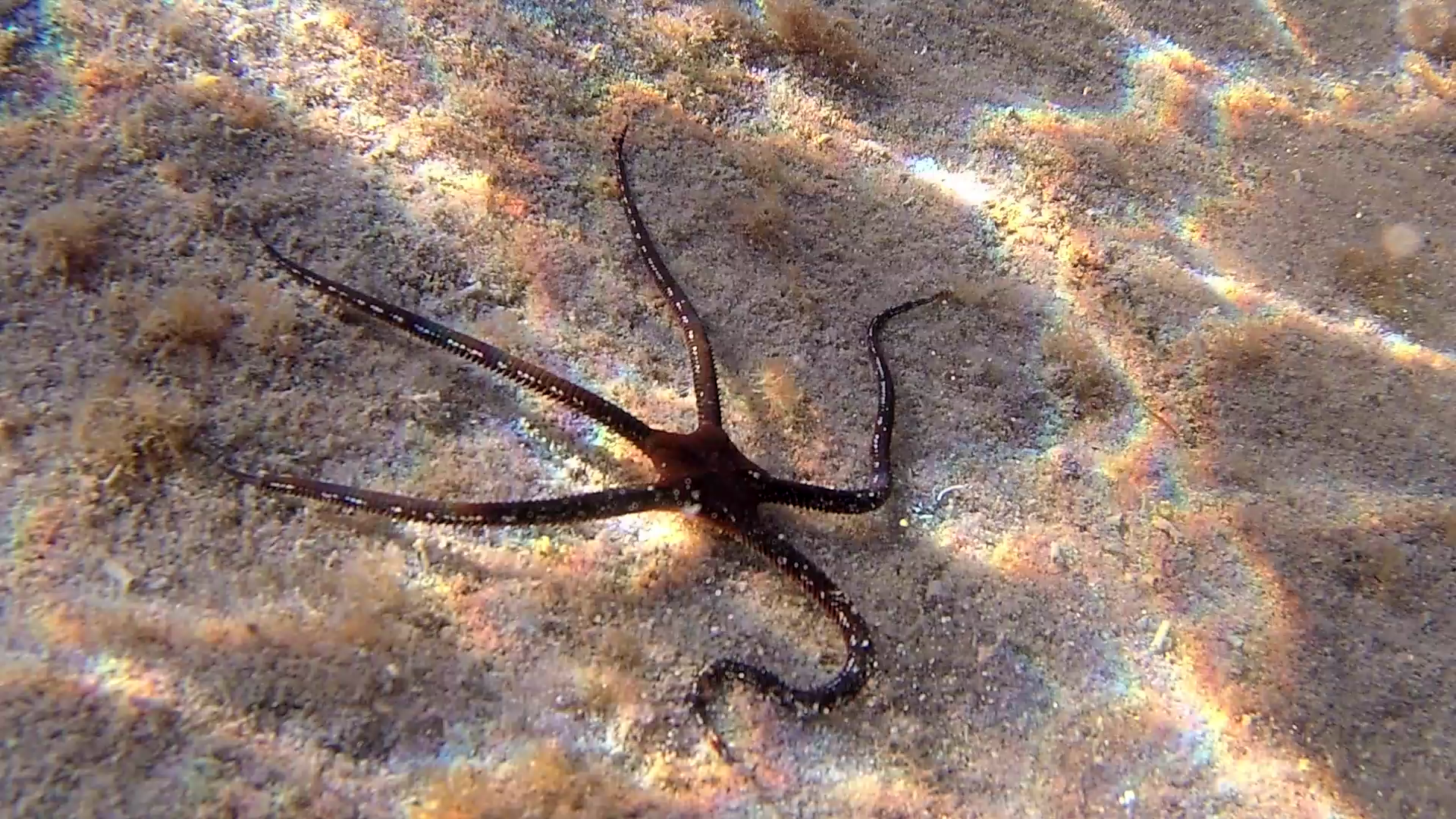
Ophiuroidea Gray, 1840 (commonly serpentine stars) are a class belonging to the phylum Echinodermata; has many similarities with the Asteroidea class (starfish).
Compared to starfish, the ophiuroidei have a more recognizable central disc and the points of the star are used for movement. The ophiuroides have a great regenerative capacity, in fact one fifth of the central disk is enough to regenerate the whole animal.
Stella Serpentina Liscia Ofiura Ophioderma Longicauda intotheblue.it
https://it.wikipedia.org/wiki/Ophioderma_longicauda
https://it.wikipedia.org/wiki/Ophiuroidea
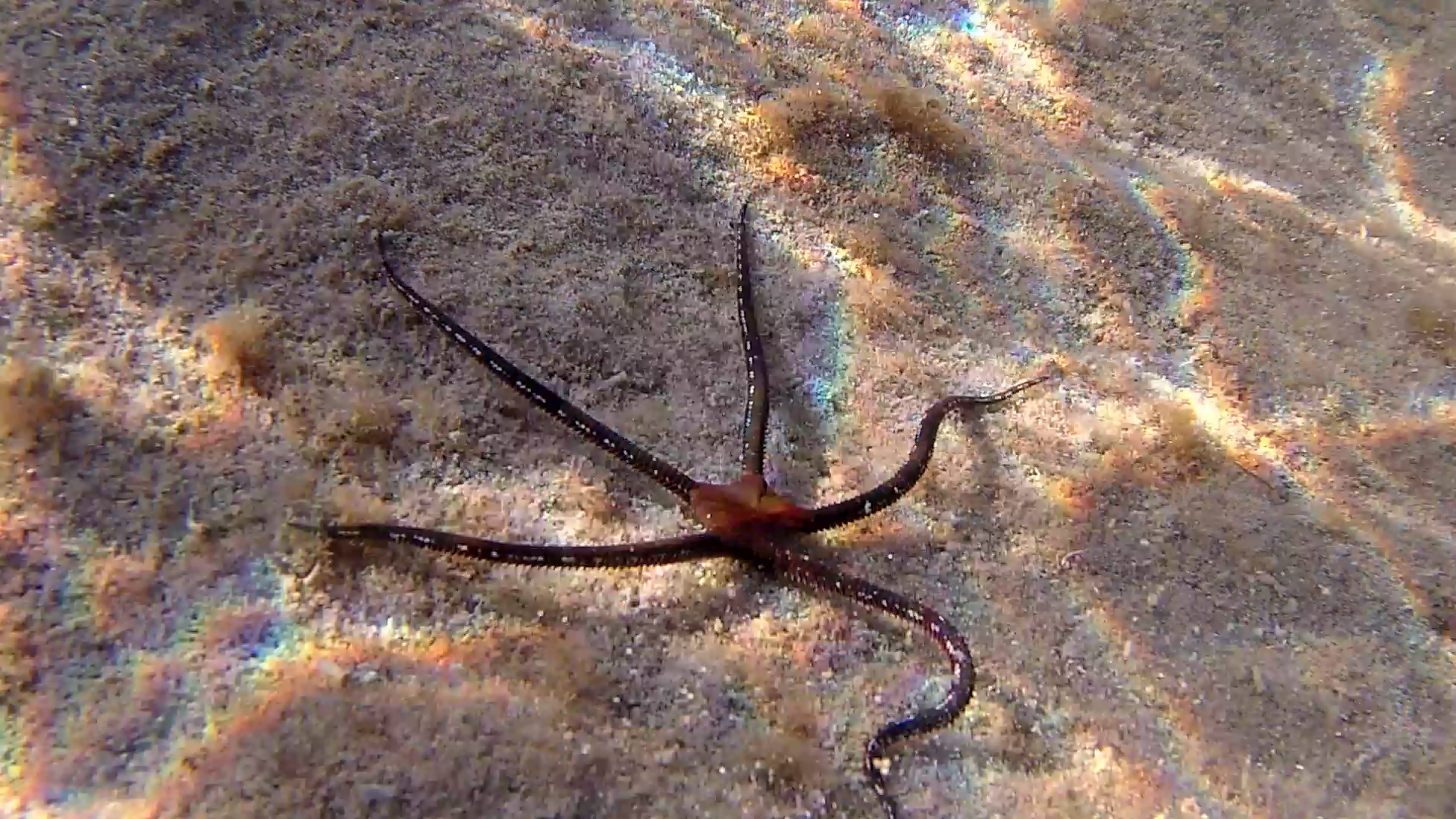
Brittle stars or ophiuroids are echinoderms in the class Ophiuroidea closely related to starfish. They crawl across the sea floor using their flexible arms for locomotion. The ophiuroids generally have five long, slender, whip-like arms which may reach up to 60 cm (24 in) in length on the largest specimens. They are also known as serpent stars; the New Latin class name Ophiuroidea is derived from the Ancient Greek ὄφις, meaning “serpent”.
The Ophiuroidea contain two large clades, Ophiurida (brittle stars) and Euryalida (basket stars). Over 2,000 species of brittle stars live today. More than 1200 of these species are found in deep waters, greater than 200 m deep.
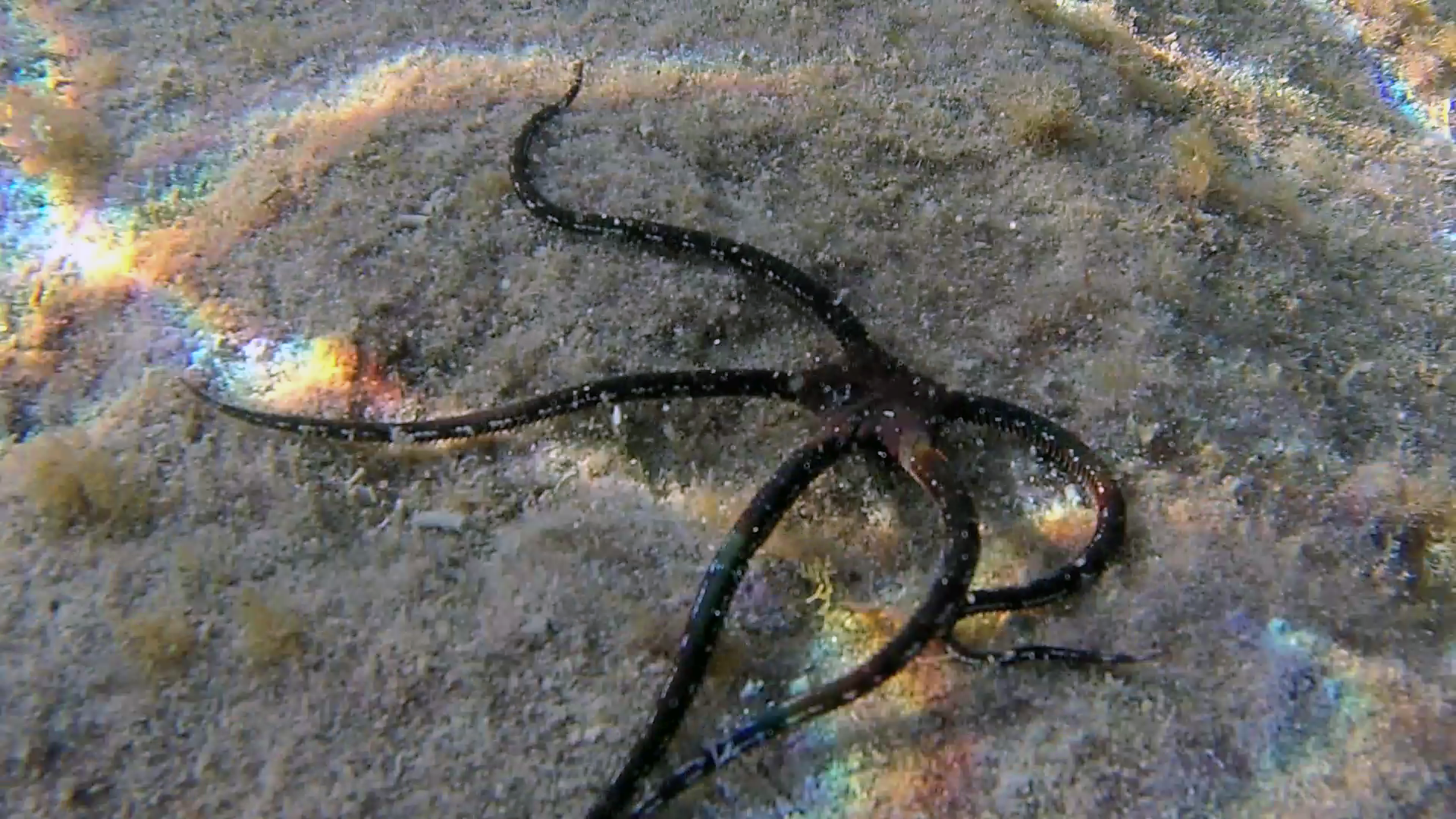
Anatomy
Asteriacites, a trace fossil of an ophiuroid; Carmel Formation (Middle Jurassic), near Gunlock, Utah; scale bar is 10 mm. Of all echinoderms, the Ophiuroidea may have the strongest tendency toward five-segment radial (pentaradial) symmetry. The body outline is similar to that of starfish, in that ophiuroids have five arms joined to a central body disk. However, in ophiuroids, the central body disk is sharply marked off from the arms.

The disk contains all of the viscera. That is, the internal organs of digestion and reproduction never enter the arms, as they do in the Asteroidea. The underside of the disk contains the mouth, which has five toothed jaws formed from skeletal plates. The madreporite is usually located within one of the jaw plates, and not on the upper side of the animal as it is in starfish.
The ophiuroid coelom is strongly reduced, particularly in comparison to other echinoderms.

Nervous system
The nervous system consists of a main nerve ring which runs around the central disk. At the base of each arm, the ring attaches to a radial nerve which runs to the end of the limb. The nerves in each limb run through a canal at the base of the vertebral ossicles.
Most ophiuroids have no eyes, or other specialised sense organs. However, they have several types of sensitive nerve endings in their epidermis, and are able to sense chemicals in the water, touch, and even the presence or absence of light. Moreover, tube feet may sense light as well as odors. These are especially found at the ends of their arms, detecting light and retreating into crevices.
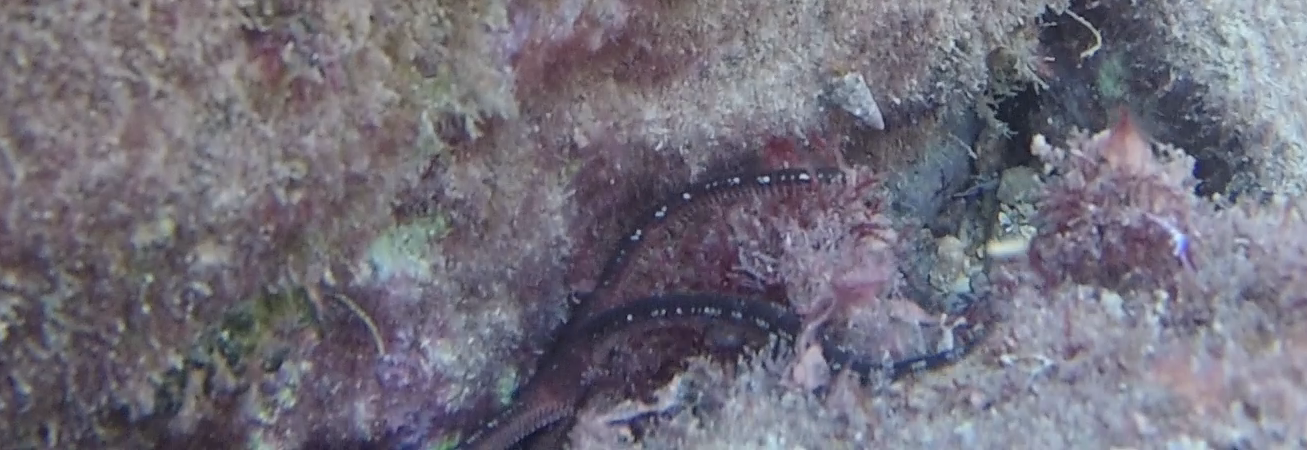
Digestion
The mouth is rimmed with five jaws, and serves as an anus (egestion) as well as a mouth (ingestion). Behind the jaws is a short esophagus and a stomach cavity which occupies much of the dorsal half of the disk. Ophiuroids haven’t an anus. Digestion occurs within 10 pouches or infolds of the stomach, which are essentially ceca, but unlike in sea stars, almost never extend into the arms. The stomach wall contains glandular hepatic cells.
Ophiuroids are generally scavengers or detritivores. Small organic particles are moved into the mouth by the tube feet. Ophiuroids may also prey on small crustaceans or worms. Basket stars in particular may be capable of suspension feeding, using the mucus coating on their arms to trap plankton and bacteria. They extend one arm out and use the other four as anchors. Brittle stars will eat small suspended organisms if available. In large, crowded areas, brittle stars eat suspended matter from prevailing seafloor currents.
https://en.wikipedia.org/wiki/Brittle_star
Gallery
Video Gallery

